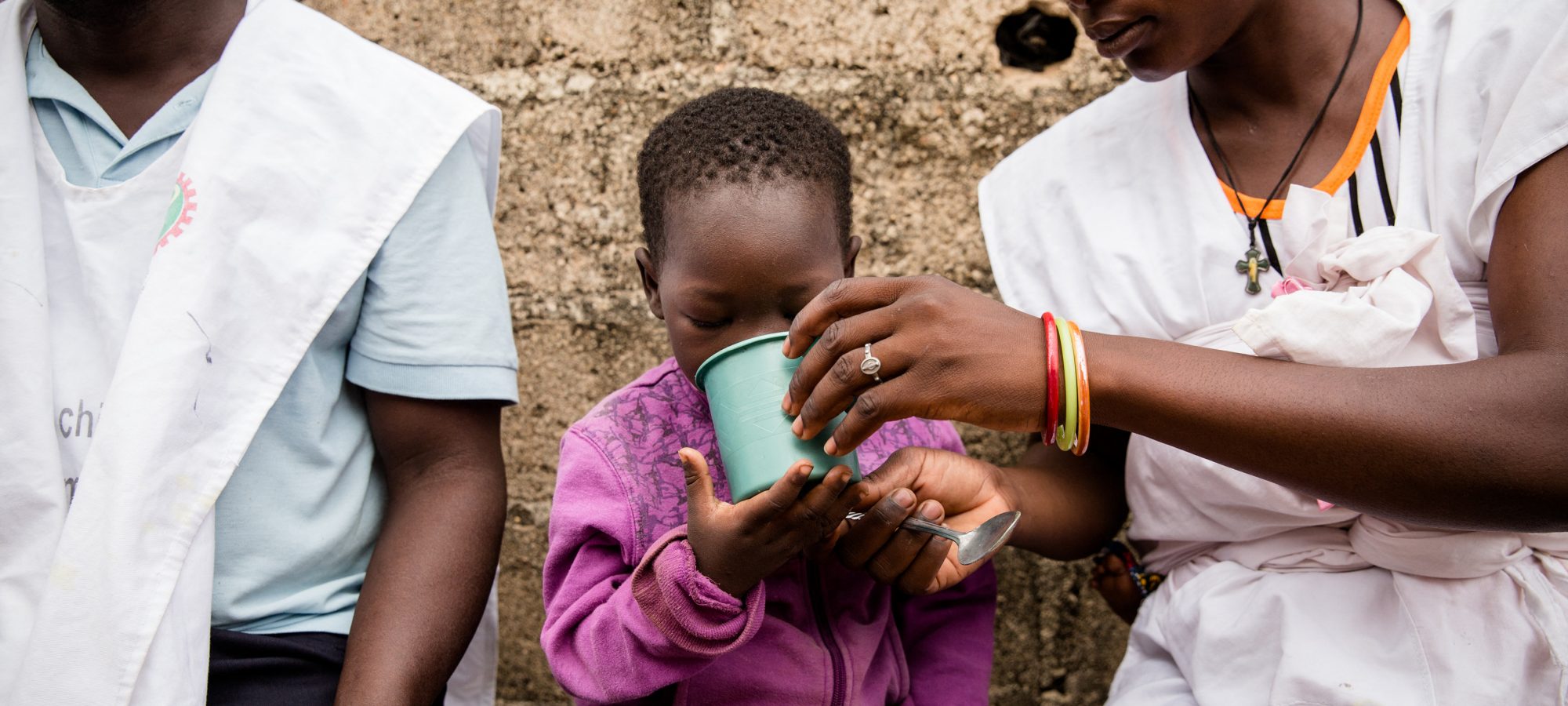



























Since 2015, we have supported Burkina Faso's National Malaria Control Program to scale up access to seasonal malaria chemoprevention for the first time to millions of children under 5 years old.
Seasonal malaria chemoprevention is a treatment course of antimalarial medicines, sulfadoxine-pyrimethamine plus amodiaquine (SP+AQ), administered one month apart in areas where the highest burden of malaria peaks during the rainy season.
US $3.40 is the estimated cost to protect one child from malaria during the rainy season with seasonal malaria chemoprevention.
Sweetened, dispersible tablets were used for the first time during 2016. It takes less than 30 seconds to administer and only requires a small amount of water.
In the Zorgho and Ziniare regions of Burkina Faso, community health workers travel door-to-door to identify eligible children and administer the first dose of seasonal malaria chemoprevention.
One community health worker administers the first dose while the other enters the child's information onto a tally sheet, patient register, beneficiary card, and, if needed, a referral form.
Caregivers are also counselled by community health workers on how to administer the remaining doses at home over the next two days.
Community health workers make an effort to come back later or find eligible children at their caregivers' workplace when no one is home.
Caregivers take advantage of the rainy season to maximise crop production, so community health workers must ensure that they reach children accompanying them in the field.
Caregivers can also be found working at a local market with their children selling food and goods.
As community workers come to the field and market, caregivers do not have to choose between earning an income and ensuring their children are protected from malaria.
Seasonal malaria chemoprevention has proven to be safe, inexpensive and effective, preventing up to 75 percent of malaria cases.
Since 2015, Malaria Consortium has helped prevent 10 million cases of malaria through SMC treatments. In 2018, we reached 4.3 million children across the three countries
There are an estimated 12 to 18 million eligible children across the Sahel who are not included in seasonal malaria chemoprevention programs. It is now urgent to close this gap and maximise the impact of this intervention.
